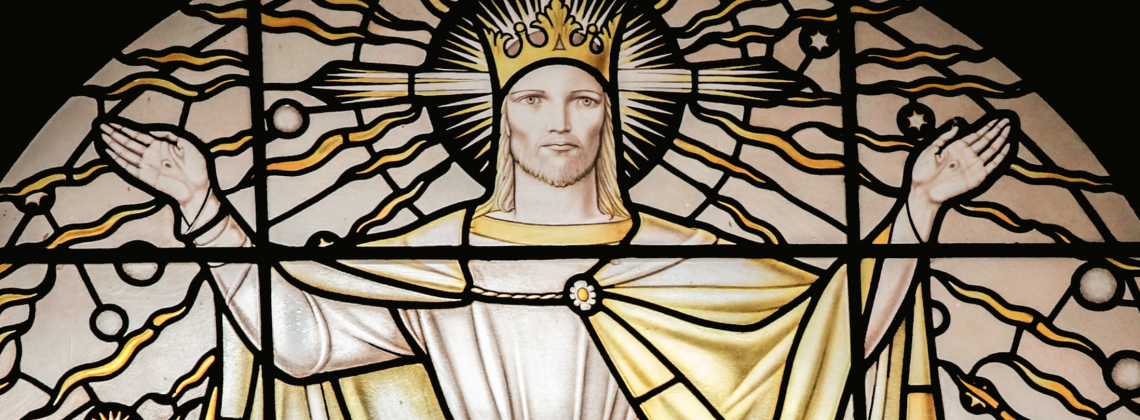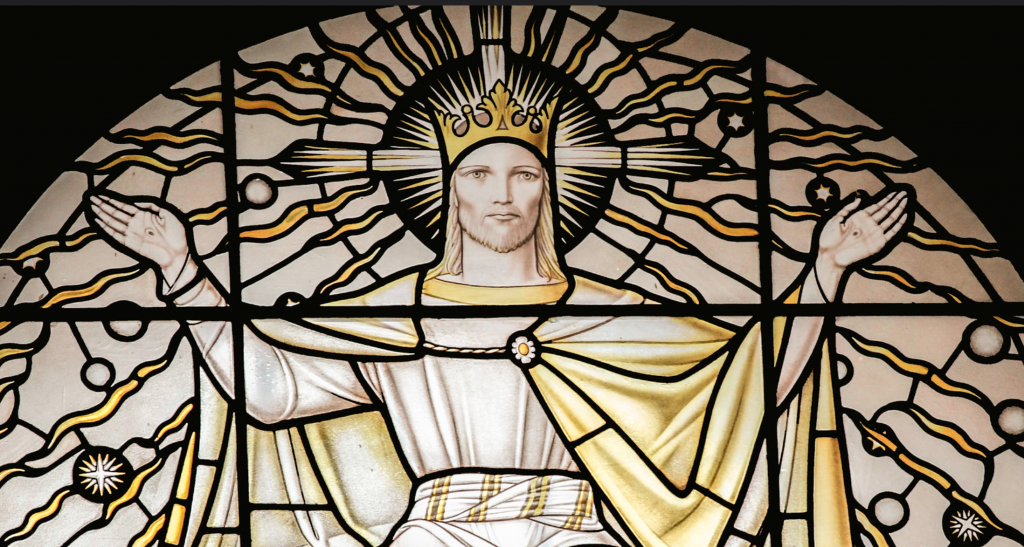

The Kingdom of God is within us, but we are also within it
“If Men were angels, no government would be necessary.” Historians and political scientists often invoke this line from James Madison’s Federalist No. 51 as evidence of the dark, residually Calvinist view of human nature that lay at the heart of the Founding Fathers’ otherwise solidly Enlightenment faith in man’s capacity for self-government. Few ask what this statement implies about the founders’ view of angels. The personal faith of the founders aside, we may safely assume the metaphor operates within something like a conventional, biblical understanding of angels: perfect beings of pure spirit. The quote nonetheless implies that the perfection of angels relieves them of the necessity of government—with the implication that government is a sign of imperfection, a consequence of sin, a legacy of the Fall.
In contrast with this perversely libertarian gloss on angelic perfection, the Bible situates angels in a very specific political order: the Kingdom of God. The perfect freedom of angels flows from their perfect obedience to Jesus Christ, their King. The founders traded this Christian paradox for a social contract: Everyone gives of some of their freedom in order to keep most of their freedom. Within limits, liberal modernity has proved tolerant enough to allow space for both paradox and contract. Christians are free to indulge in paradox to their souls’ content, so long as they confine such indulgence to the private sphere and recognize the single standard of contract in the public sphere. In practice, the boundaries between public and private, politics and faith, have varied over time; nonetheless, defenders of a sharp boundary have for several generations found in Jefferson’s metaphor of a “wall of separation” the “true” meaning of the disestablishment clause of the First Amendment.
’Tis the season to reflect on these issues. The Catholic Church has recently concluded the 2020-21 liturgical year with the Feast of Christ the King, the last Sunday in Ordinary Time, right before the beginning of the new liturgical year with the season of Advent. The understanding of Christ as King requires some effort on the part of Christian citizens of a country born in the rejection of monarchical authority. Aside from providing fodder for salacious tabloids and BBC miniseries, monarchy has no authoritative standing in modern Western culture. But the Feast of Christ the King is no holdover from the Middle Ages. It was established by Pius XI in 1925 as part of the Church’s response to the increasing privatization of faith and rejection of hierarchical authority in the modern era.
Unfairly slandered as a dog whistle for fascism, Quas Primas, the encyclical in which Pius XI instituted the feast, offered a much broader reflection on the state of Western society in the wake of the killing fields of the Great War. Historians may take issue with Pius’s explanation of the war as a consequence of the rejection of Jesus Christ in public life, but both the war and the rejection stand as historical facts. The bourgeois civilization of the nineteenth century declared its independence from authoritative Christianity only to have the new religions of liberalism and nationalism guide the West toward a civilizational civil war whose slaughter dwarfs that of anything produced by the so-called “Wars of Religion” of the Reformation era.
Pius XI’s words remain hard sayings for Christians who have accepted the modern etiquette of disestablishment:
Nations will be reminded by the annual celebration of this feast that not only private individuals but also rulers and princes are bound to give public honor and obedience to Christ. It will call to their minds the thought of the last judgment, wherein Christ, who has been cast out of public life, despised, neglected and ignored, will most severely avenge these insults; for his kingly dignity demands that the State should take account of the commandments of God and of Christian principles, both in making laws and in administering justice, and also in providing for the young a sound moral education.
Unsympathetic historians see in such sentiments a precursor to Pius’s accommodation of fascist governments, reflected in treaties with Italy (1929) and Germany (1933). Those discerning an authoritarian political trajectory in Pius’s words must reckon with his condemnation of the quasi-fascist, French royalist movement Action français in 1926 and his condemnation of National Socialism in his 1937 encylical Mit Brennender Sorge. True, despite the rise of the rise of fascism and communism, Pius was not yet willing to embrace liberal democracy as the last best hope of mankind. He still believed that Jesus Christ was the last best hope for mankind.
To bring this hope to the world, Pius XI promoted a general program of social evangelization he called “Catholic Action.” Inspired by his predecessor Pius X’s motto, “To Restore All Things in Christ,” Pius envisioned Catholics bringing Christ to the whole world across the full range of social settings. In place of a general, one-size-fits-all evangelization, the idea was to have clergy guide lay Catholics in developing various approaches appropriate to specific milieux: youth would evangelize youth, students would evangelize students, doctors, lawyers and other professionals would evangelize their particular professional communities. The crown jewel of this strategy was the Catholic labor movement. The era of the Great Depression was the heroic age of labor priests, such as Charles Owen Rice, and the lay Catholic labor leaders, such as Phillip Murray. Despite addressing labor gatherings that included many non-Catholics, Rice never shied away from explicitly Christian language. In the heat of the battle of a steel strike in Youngstown, Ohio in 1937, he declared that “Too many industrialists conduct their affairs as if Christ had never lived and died, as if there were no just God in heaven, and have tried to rule like the absolute Pagan Emperors of old, forgetting that they were dealing with human beings, endowed with human rights by the God who made them.”
For his part, Phil Murray, future leader of the Congress of Industrial Organizations (CIO), kept on his desk for guidance a copy of Quadragesimo Anno, Pius XI’s 1931 social encyclical endorsing labor unions and the government regulation of the economy in service of the common good. In Depression-Era Pittsburgh, Catholic priests and laymen forged what historian Ken Heinemann has called “The Iron City Trinity”: the Church, the Democratic Party, and the steel workers’ union.
Within the context of liberal democracy, this trinity found a way to proclaim Christ the king of labor relations. It did so in no small part due to lay people accepting the legitimacy of certain kinds of hierarchical authority: most obviously clerical authority within the Church, but also the chain of command within the local Democratic Party, which (in northern cities) more than one observer likened to the episcopal structure of the Catholic Church.
The labor movement of the 1930s remains the high point of the quest for a distinctly Catholic language of social justice. In the wake of John F. Kennedy’s auto-da-fé before the Greater Houston Ministerial Association, Catholic activists of the 1960s would embrace a more “neutral” language of individual rights and ultimately use it against the Church itself. The African American struggle for civil rights followed a similar trajectory: The unity provided by the Black church collapsed in part due to the demands of a younger, more secular generation for freedom from the authority structures of the Black church. Subsequent movements for “social” justice have simply extended rights talk from the individual to an aggregate of individuals; group rights have proven a poor substitute for communal goods. As the historian Daniel Rodgers has observed, in late-twentieth-century reform movements across the political spectrum the primacy of rights undermined hierarchy only to replace it with fracture. In view of such turns, Pius XI’s message to us yet speaks: While the Kingdom of God is within us, we are also within it.
Christopher Shannon is associate professor of history at Christendom College in Front Royal, Virginia. He is the author of several works on U.S. cultural history and American Catholic history, including the forthcoming American Pilgrimage: A Historical Journey Through Catholic Life in a New World, due out in the spring of 2022 from Ignatius Press.
Christopher Shannon is associate professor of history at Christendom College in Front Royal, Virginia. He is the author of several works on U.S. cultural history and American Catholic history, including American Pilgrimage: A Historical Journey Through Catholic Life in a New World (2022), available from Ignatius Press.